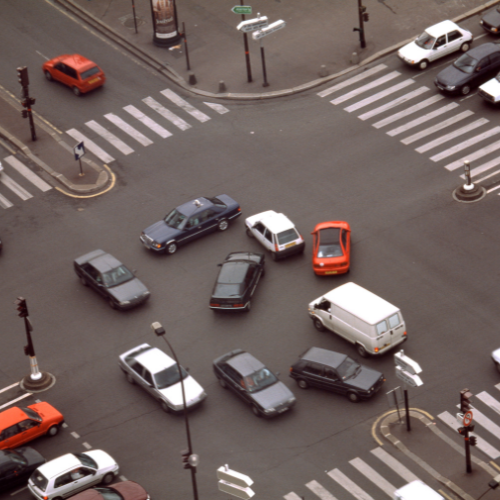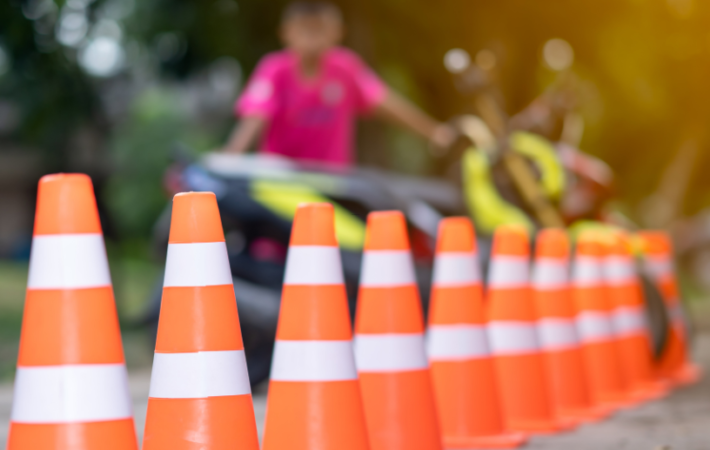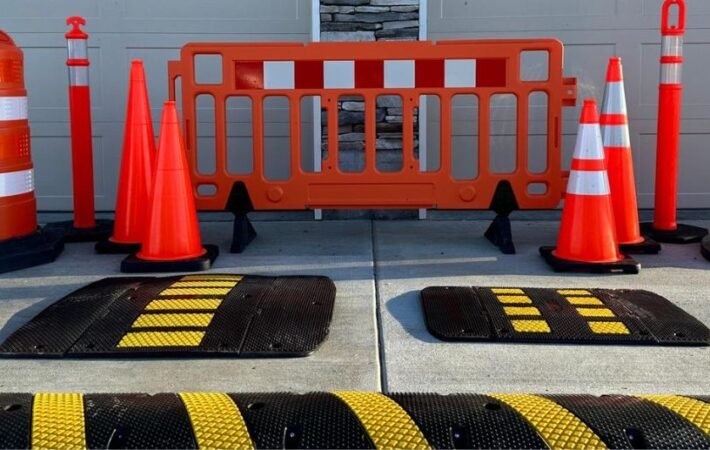The leading cause of intersection accidents are many, let’s explore causes and ways to prevent them!
Intersections are some of the busiest and most complex areas on our roads, where drivers, cyclists, and pedestrians all converge. Unfortunately, these intersections are also the areas where accidents frequently occur. The leading cause of intersection accidents is often linked to various factors, it could be driver inattention to unclear road signage or rash driving at these points.
It is essential to understand what contributes to these incidents and how we can prevent them. Understanding the causes behind intersection accidents can help drivers be more cautious and alert.
So let’s discuss this issue in this blog!
The Leading Cause of Intersection Accidents:
Intersections are critical points on the road where vehicles, cyclists, and pedestrians cross paths, often from multiple directions. Due to this convergence, they are high-risk areas where accidents frequently occur.
There are multiple leading causes of intersection accidents as highlighted below:
- Driver inattention and distraction
- Driver failure to yield the right way
- Running red lights and stop signs
- Improper turns and misjudging gaps
- Over speeding
- Aggressive driving
- Attempting to run a yellow light
- Rear-end collisions
- Disobeying traffic signals
- Prohibited turns
- Being rear-ended and pushed into traffic
- Obstructed Views
- Not adjusting for weather or road conditions
- Defective equipment
Now, let’s move to explore these points to make you understand how it is the leading cause of intersection accidents:
Driver Inattention and Distraction:
The leading cause of intersection accidents is driver’s distraction. Distractions occur when a driver’s focus is diverted away from the task of driving, making it difficult to react to sudden changes in traffic.
There are many sources of distraction that can take a driver’s attention away from the road. In today’s world, mobile phones are one of the biggest culprits. Texting, talking on the phone, or even using GPS while driving are significant distractions. Adjusting the radio, eating, or talking to passengers can all pull a driver’s focus away from the road. Even hands-free devices can be a problem, as they can engage a driver in a conversation that diverts their mental attention. Looking away for a moment can lead to missed traffic signals or other vehicles, increasing the risk of a collision.
External distractions are another factor to consider. Drivers may be distracted by billboards, construction sites, noisy streets, or other activities outside the car. The more distracted a driver is, the less prepared they are to handle sudden changes, such as a vehicle stopping abruptly or a cyclist crossing their path.
Prevention:
At intersections, drivers need to pay close attention to their surroundings, including traffic lights, road signs, and the movements of other vehicles and pedestrians. When distracted, a driver may miss these critical cues, leading to delayed reactions or dangerous decisions.
To reduce the risks associated with driver inattention and distraction, it is crucial to limit distractions as much as possible. Drivers should avoid using their phones, set up GPS directions before starting their trip, and keep interactions with passengers to a minimum. By staying focused on the road and minimizing distractions, drivers can improve their ability to react quickly and make safe decisions
Driver Failure to Yield the Right of Way:
One of the main causes of accidents at intersections is when drivers fail to yield the right of way. Right-of-way rules are established to help traffic flow smoothly and ensure that everyone knows when to proceed. However, when drivers don’t yield appropriately, they disrupt the flow and create dangerous situations that can lead to serious collisions. This behavior is especially risky at intersections where multiple vehicles, and pedestrians may be present, each with a designated right of way.
There are several scenarios where failing to yield can cause accidents. For instance, when making a left turn, drivers must wait until oncoming traffic has passed. Unfortunately, some drivers misjudge the speed of oncoming vehicles or attempt to turn too quickly, leading to T-bone or side-impact collisions. Similarly, drivers entering a busy intersection may try to merge without yielding, causing sudden stops or swerves from other vehicles. Ignoring right-of-way rules not only endangers other drivers but also pedestrians and drivers who are trying to cross safely.
Yielding the right of way is also crucial when it comes to pedestrians in crosswalks and cyclists in bike lanes. Drivers often overlook these vulnerable road users in their rush to proceed, creating high-risk situations. Failing to yield in these cases not only endangers lives but can also result in severe injuries. Drivers need to remain aware of their surroundings and respect the rules of the road to ensure a safer environment for everyone at intersections.
Prevention:
To prevent accidents related to failure to yield, drivers should become familiar with right-of-way rules and follow them consistently. When approaching intersections, it is important to slow down, observe traffic signals, and remain alert to other road users.
Drivers should always yield to pedestrians in crosswalks and wait for oncoming traffic to pass before making turns. By following these guidelines and respecting the right of way, drivers can reduce confusion and ensure smoother, safer travel through intersections.

Running Red Lights and Stop Signs:
Running red lights and stop signs is a major cause of accidents at intersections. These signals help manage traffic and keep everyone safe. When drivers ignore them, they create dangerous situations that can lead to serious crashes. Often, these accidents involve one car hitting another at high speeds, especially in T-bone collisions.
Drivers may run red lights or stop signs for several reasons. Some are in a hurry and don’t want to wait. Others may be distracted and not see the signal until it’s too late. Some drivers also misjudge yellow lights, thinking they can speed through before the light turns red. This can lead to running the light unexpectedly.
Ignoring these signals is not only unsafe but also against the law. Drivers who run red lights or stop signs can face fines and points on their driving record. It is important to remember that pedestrians and cyclists depend on these signals too. When drivers don’t stop, they can put everyone at risk.
Prevention
To avoid accidents, drivers should always pay attention at intersections. They should slow down when approaching a yellow light and stop completely at signs. Before moving, they need to check for other cars and pedestrians. By being careful and following traffic signals, drivers can help keep the roads safe for everyone.
Improper Turns and Misjudging Gaps:
Improper turns and misjudging gaps can lead to dangerous situations at intersections. Improper turns occur when drivers make turns in areas where they are not permitted, such as turning left when there is a “No Left Turn” sign or making U-turns in restricted areas. These actions can confuse other drivers and create unexpected traffic patterns that may result in collisions.
Misjudging gaps happen when a driver incorrectly assesses the space available to make a turn safely. For example, a driver might think they have enough time to turn left in front of oncoming traffic, only to realize too late that another vehicle is approaching faster than expected. This can lead to serious accidents, especially if the turning vehicle collides with an oncoming car or if it causes a chain reaction with other vehicles in the intersection.
Prevention:
To avoid accidents related to improper turns and misjudging gaps, drivers should always obey traffic signs and signals regarding turns. It’s essential to be aware of one’s surroundings and wait for clear gaps in oncoming traffic before making a turn. If unsure, it is better to err on the side of caution and wait for a more favorable opportunity to proceed. Additionally, drivers should always signal their intentions and check mirrors for cyclists and pedestrians before turning, ensuring a safer experience at intersections.
Over Speeding:
Overspeeding is a major factor in intersection accidents. When drivers approach intersections at high speeds, they have less time to react to traffic signals, other vehicles, and pedestrians. This lack of reaction time can result in sudden stops, rear-end collisions, or even running through red lights and stop signs. Driving too fast also makes it harder to control the vehicle, increasing the risk of severe crashes.
Speeding through intersections is especially dangerous because of the high traffic volume, including cars, cyclists, and pedestrians. A speeding driver might be unable to stop in time if someone suddenly crosses or another car turns unexpectedly. High speeds also make any potential accident more severe, leading to greater damage and a higher chance of injury for everyone involved.
Prevention:
To prevent accidents caused by speeding, drivers should always slow down when approaching intersections. Observing the posted speed limits and reducing speed gives drivers more time to respond to changing traffic conditions. It is also wise to be extra cautious in areas with heavy pedestrian traffic, as this can help drivers stop safely if someone crosses unexpectedly. By keeping speeds under control, drivers can navigate intersections more safely and reduce the risk of collisions.
Aggressive Driving:
Aggressive driving is a significant contributor to intersection accidents. This behavior includes speeding, tailgating, weaving in and out of traffic, and making sudden lane changes. At intersections, aggressive drivers may try to rush through yellow lights, make risky turns, or cut off other vehicles. These actions increase the chances of a collision and create unpredictable situations for other road users.
Aggressive driving often stems from impatience or frustration. Drivers may feel they are in a hurry and take unnecessary risks to save time. This behavior can also escalate into road rage, where drivers intentionally endanger others by honking excessively, blocking lanes, or even trying to teach a lesson to other drivers. Such actions not only endanger the aggressive driver but also put pedestrians, cyclists, and other vehicles at risk.
Prevention:
To reduce accidents from aggressive driving, it is important for drivers to remain calm and patient at intersections. Allowing extra time for trips can help avoid the need to rush. Additionally, drivers should practice courteous driving, which means giving others space, following traffic signals, and respecting the right of way. By staying calm and focused, drivers can navigate intersections more safely and reduce the chances of aggressive driving accidents.

Attempting to Run a Yellow Light:
Attempting to run a yellow light is a common cause of accidents at intersections. Many drivers see a yellow light as a signal to speed up rather than slow down. This action increases the risk of running a red light or entering the intersection when other drivers or pedestrians may already be crossing. By trying to beat the yellow light, drivers often make risky choices that lead to collisions.
When a driver speeds up to make it through a yellow light, they may misjudge the timing and enter the intersection just as cross-traffic is starting to move. This behavior is particularly dangerous during heavy traffic, as other drivers may not anticipate someone racing through the intersection. Additionally, pedestrians and cyclists may start crossing when the light changes, putting them at risk from cars that are still moving through the intersection at high speeds.
Prevention:
To prevent accidents from running yellow lights, drivers should always slow down when approaching a yellow signal. Instead of speeding up, it is safer to prepare to stop unless it is unsafe to do so. Drivers should view yellow lights as a warning and give themselves enough time to make safe decisions. By adopting a cautious approach, drivers can help reduce the likelihood of accidents at intersections and create a safer environment for everyone on the road.
Rear-End Collisions:
Rear-end collisions are common at intersections and can happen when drivers don’t anticipate sudden stops. These accidents typically occur when a driver is following too closely and is unable to stop in time if the car in front brakes suddenly. Rear-end collisions are especially likely at intersections where traffic frequently stops for red lights, stop signs, or turning vehicles.
One of the main causes of rear-end collisions is tailgating, or following too closely behind another vehicle. When drivers don’t leave enough space, they have little time to react if the car in front of them stops unexpectedly. Additionally, distractions like using a phone or adjusting the radio can delay a driver’s reaction time, increasing the risk of hitting the car ahead. In some cases, a chain reaction can occur, where multiple cars are involved in a series of rear-end collisions.
Prevention:
To avoid rear-end collisions, drivers should maintain a safe following distance, especially when approaching intersections. A good rule of thumb is to stay at least two to three seconds behind the vehicle in front. This allows for enough reaction time if sudden braking is needed. Drivers should also stay alert and focused on the road, watching for signals that the car ahead is slowing down or stopping. By keeping a safe distance and staying attentive, drivers can significantly reduce the risk of rear-end collisions at intersections.
Disobeying Traffic Signals:
Disobeying traffic signals is a major cause of accidents at intersections. When drivers ignore red lights, stop signs, or other traffic signals, they put themselves and others at risk. Running a red light, for instance, can result in dangerous side-impact or “T-bone” collisions, as other vehicles entering the intersection are not expecting cross-traffic.
Ignoring traffic signals often stems from impatience or inattention. Drivers might speed through intersections because they are in a hurry or distracted. Some may even mistakenly assume that a signal doesn’t apply to them or misjudge the timing. This kind of behavior not only disrupts the flow of traffic but also increases the chances of collisions with other cars, cyclists, or pedestrians.
Prevention:
To prevent accidents caused by disobeying traffic signals, drivers should always slow down and be prepared to stop as they approach intersections. It is essential to follow all signals, even if the road appears clear. By observing red lights, stop signs, and other traffic controls, drivers can help ensure a safer intersection for everyone. Additionally, paying close attention to changing signals and avoiding distractions can help drivers make timely and safe decisions at intersections.
Prohibited Turns:
Prohibited turns at intersections are another leading cause of accidents. These occur when drivers make turns that are either not allowed or not safe, such as turning left where a “No Left Turn” sign is posted or making U-turns in areas where they are prohibited. When drivers disregard these signs, they often create unexpected traffic movements that can confuse other drivers and lead to collisions.
Ignoring turn restrictions can also put pedestrians, bike riders and cyclists in danger. For example, a driver making an illegal right turn on red may not see a pedestrian crossing the street or another vehicle approaching. Prohibited turns disrupt the intended flow of traffic, increasing the risk of crashes and contributing to congestion at intersections.
Prevention:
To avoid accidents caused by prohibited turns, drivers should always check for posted signs and obey turn restrictions. Following these signs ensures that traffic flows smoothly and reduces the risk of unexpected conflicts with other vehicles, pedestrians, or cyclists. It is also important to plan your route in advance so you won’t feel pressured to make sudden turns in unfamiliar areas. By respecting traffic rules and signs, drivers can help maintain a safer environment at intersections.
Being Rear-Ended and Pushed into Traffic:
Being rear-ended and pushed into traffic is a serious risk at intersections, particularly when a driver is stopped at a red light or stop sign. When a car is hit from behind, the impact can push it forward into cross traffic or even onto a pedestrian crossing. This type of accident is often more dangerous because it involves multiple vehicles and unexpected movements into active lanes.
Rear-end collisions leading to secondary impacts typically happen when the driver behind is either distracted, following too closely, or speeding. If they fail to stop in time, the force from the collision can propel the front vehicle forward. In some cases, the driver who is hit may have little to no control over their car’s movement, putting them and others in a hazardous situation. This type of crash can result in multiple injuries and cause significant damage to all vehicles involved.
Prevention:
To minimize the risk of being rear-ended and pushed into traffic, drivers should always keep a safe distance from the car ahead, allowing room to move forward if needed. Keeping an eye on the rearview mirror, especially when stopped, is also helpful to stay aware of any approaching vehicles. When approaching a stop, drivers can also try to gradually slow down rather than brake suddenly, giving the car behind more time to respond. Additionally, staying alert and ready to react can help drivers manage situations where another vehicle is approaching too quickly from behind.
Obstructed Views:
Obstructed views at intersections can make it challenging for drivers to see oncoming traffic, pedestrians, or cyclists. Common obstacles include large vehicles like trucks or buses, parked cars, trees, and even buildings that block a driver’s line of sight. When drivers can’t clearly see their surroundings, they may proceed through intersections without realizing another vehicle or person is crossing, leading to potentially serious collisions.
In situations with obstructed views, drivers may try to inch forward to get a better look, but this can put them in the path of moving traffic. Additionally, blind spots can make it difficult for drivers to see smaller vehicles, like motorcycles or bicycles, increasing the risk of an accident. This issue is especially problematic in busy urban areas with heavy pedestrian and cyclist traffic, where limited visibility can result in sudden and unexpected encounters.
Prevention:
To navigate intersections with obstructed views safely, drivers should proceed slowly and cautiously, ensuring they have as much visibility as possible before moving forward. Rolling down windows to listen for approaching vehicles can be helpful in areas with limited sightlines. If available, using mirrors and adjusting the vehicle’s position slightly may also improve the view. Most importantly, drivers should avoid rushing and remain prepared to stop if any oncoming traffic, pedestrians, or cyclists suddenly appear. Taking these precautions can significantly reduce the risk of accidents at intersections with obstructed views.
Not Adjusting for Weather or Road Conditions:
Failing to adjust for weather or road conditions is a common cause of accidents at intersections. When roads are wet, icy, or covered in debris, vehicles require a longer distance to come to a complete stop. Drivers who don’t take these conditions into account may slide into intersections or lose control when making turns. Poor weather conditions, such as heavy rain, fog, or snow, can also reduce visibility, making it harder for drivers to see traffic signals, pedestrians, or other vehicles.
Many drivers underestimate the effect that weather has on stopping distances and traction. For example, in rainy or icy conditions, braking too quickly can lead to skidding. Additionally, worn tires or poorly maintained brakes can make it even harder to stop or maneuver safely. These issues are amplified at intersections, where sudden stops are often necessary, and visibility is crucial.
Prevention:
To stay safe in poor weather and road conditions, drivers should reduce their speed and increase following distances. Slowing down provides more time to react and minimizes the risk of losing control. It’s also essential to use headlights in low-visibility situations and keep windshields clear for optimal vision. Regular vehicle maintenance, such as checking tires and brakes, can also improve performance on slippery or uneven surfaces. By adjusting driving habits based on the weather and road conditions, drivers can help ensure safer travel through intersections.
Defective Equipment:
Defective equipment can contribute to accidents at intersections, especially when crucial vehicle components like brakes, tires, or lights are not functioning properly. Malfunctioning brakes, for instance, can prevent a driver from stopping in time at a red light or stop sign, increasing the risk of rear-end collisions or other accidents. Worn tires can also reduce traction on wet or icy roads, making it harder to control the vehicle and stop safely.
Headlights, turn signals, and brake lights play a significant role in keeping intersections safe by helping drivers communicate their intentions to others. If any of these are not working, it can lead to confusion and misunderstandings among drivers, pedestrians, and cyclists. For example, a burned-out brake light might make it difficult for the car behind to know when a vehicle is stopping, increasing the likelihood of a rear-end collision.
Prevention:
To prevent accidents caused by defective equipment, drivers should perform regular maintenance on their vehicles. Checking brakes, tires, lights, and other critical components can help ensure they are in good working order. Routine inspections and prompt repairs can address small issues before they become major hazards on the road. By keeping their vehicles properly maintained, drivers can reduce the risk of equipment-related accidents at intersections and contribute to safer driving conditions for everyone.
Final Thoughts:
Intersection accidents are often caused by a combination of factors, many of which are preventable with careful driving and awareness. From distractions and aggressive driving to failing to yield and running red lights, each behavior increases the risk of collisions at these critical points on our roads.
Understanding these causes and adopting safe driving practices can significantly reduce the likelihood of accidents at intersections. By slowing down, staying alert, respecting right-of-way rules, and following traffic signals, drivers can make intersections safer for everyone. It is up to each individual on the road to be mindful and responsible. With everyone’s cooperation, we can make our intersections less hazardous and our roads a safer place for all.
Frequently Asked Questions:
Why are intersections more dangerous than other parts of the road?
Intersections involve multiple vehicles and pedestrians moving in different directions, increasing the potential for conflicts. Drivers must make quick decisions while managing signals, signs, and cross-traffic, which can lead to accidents if not done carefully.
How can I reduce my risk of getting into an accident at an intersection?
You can reduce your risk by staying alert, following traffic signals, slowing down when approaching intersections, yielding the right-of-way when required, and avoiding distractions like cell phones.
What should I do if I’m involved in an accident at an intersection?
First, ensure everyone’s safety and call for medical help if needed. Then, move your vehicle out of traffic if possible, call the police to report the accident, and exchange information with other involved parties. Don’t forget to document the scene with photos.
What should I do if I’m a pedestrian at an intersection?
Always use crosswalks, obey pedestrian signals, and remain alert to turning vehicles.









Leave a comment
Your email address will not be published. Required fields are marked *